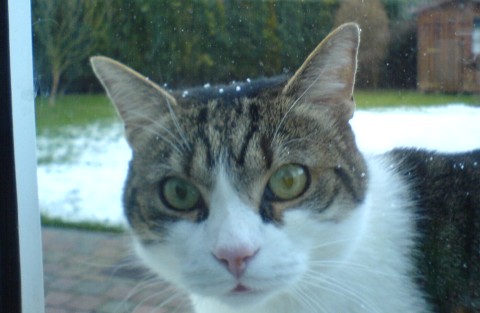Introduction
This is an improved version of the reflection.js script rewritten for the jQuery javascript library. It allows you to add instant reflection effects to your images in modern browsers, in less than 2 KB.
Demo



Features
Compared to the original reflection.js, this script has the following added features:
- The reflections appear instantly under each image as soon as it completes loading, instead of having to wait for all images of the page to be loaded before seeing all reflections being applied at the same time. This provides a much better user experience.
- The code is smaller than the original reflection.js and has been optimized for jQuery. If you are already using jQuery, you will gain a few kilobytes.
- The code has a few bugfixes that the original script doesn’t have. It usually works better.
- It allows you to specify a fixed height or a relative height for the reflection.
Performance
Like the original reflection.js, this script is much faster than the script.aculo.us Reflector script (which is not suited for production use), because it does not create a large number of image zones (one for each pixel line). Instead, it uses the canvas tag available in most modern browsers, and DirectX image transformation filters in Internet Explorer, so the reflection image is drawn natively in one step.
Compatibility
This script works in all browsers supporting the canvas tag: Firefox 1.5+, Opera 9+, Safari 2+, Camino, Google Chrome and Internet Explorer 9+. It also works in Internet Explorer 6-8 by using an alternative drawing technique.
In older browsers, the script will degrade automatically (the images will remain untouched).
Warning: Firefox 2.0.0.10 broke the canvas.drawImage() javascript function and therefore this particular version does not work with this script. Firefox 2.0.0.11 and more recent will work.
It works with all image formats, but reflections of animated GIFs will not be animated: the first frame will be used for the reflection. There is no way to make a dynamic animated reflection for GIF images using javascript.
Requirements
Reflection.js for jQuery (obviously) requires the jQuery library, version 1.2.3 or more recent.
Usage
Setup
Just include the script in the header of your page, after the inclusion of the jQuery library:
<script type="text/javascript" src="js/jquery.js"></script>
<script type="text/javascript" src="js/reflection.js"></script>Adding reflections
Reflections can be added to any image tag over any kind of background (even image backgrounds!). There are two ways of adding a reflection:
1) Using HTML, by applying a CSS class named “reflect” to your images:
<img src="test.jpg" alt="" class="reflect" />This will use the default reflection parameters (see below). You can apply multiple classes to an image (separated by spaces), the script will detect if “reflect” is one of them.
2) Using javascript, by calling the reflect() method on a jQuery selector. Examples:
$("#photo1").reflect(options);or
$("#gallery img").reflect(options);“options” is an optional argument similar to the other options arguments in jQuery. The following options are available:
- height: The height of the reflection. It can be proportional or fixed. If the value is included between 0 and 1, it is considered as proportional to the image’s height (where 1 means 100%). If the value exceeds 1, it is considered as a fixed height, in pixels. Note that the reflection will never be taller than the image, even if this value exceeds the image’s height. Default is 1/3 (proportional).
- opacity: The starting opacity of the reflection (range: 0 to 1). The reflection is shown as an opacity gradient going from this value to 0. Default is 1/2.
If you call this method more than once for the same image, the previous reflection will be automatically replaced by the new one.
Important: If you use javascript to add the reflection effect, you can call these methods either as soon as the DOM is ready (using the jQuery function) or by placing the call directly in a javascript block below the image you want to reflect. You don’t need to delay the call after the window “load” event. Your images will appear reflected as soon as they complete loading, even if they were not fully loaded when the javascript method was called. This is the main difference between this script and the original reflection.js.
Removing reflections
You can remove a reflection using javascript, by calling the unreflect() method on a jQuery selector. Example:
$("#photo1").unreflect();CSS limitations
When adding the reflection effect, the script wraps the image inside a <div> block and adds the reflection to the same block, just below the original image. The class and style attributes of the image will be set blank and applied to the div instead, so the whole block will show like the original image. This operation is reverted when removing the reflection.
This means that you can style the mirrored images using CSS classes and using their style attribute, but you can not style the img tag directly.
For example, when reflected, the following image will not display properly because it is using a CSS rule mentioning the img tag:
CSS:
#content img {
float: left;
margin: 20px;
}HTML:
<img src="..." alt="" class="reflect" />Instead, you must use a CSS class without referring to the img tag (or use the style attribute) and it will display like expected:
CSS:
#content .leftimage {
float: left;
margin: 20px;
}HTML:
<img src="..." alt="" class="leftimage reflect" />Also, the reflection will display properly with block-style images, but not with inline-style images. If you apply it to an inline-style image, it will be transformed to a block-style image. Most websites use only block-style images, so it should not be a problem.
Finally, you must not specify the height of the reflected image using a CSS class or style property, because the height will increase when the reflection will be applied. Set the width and height attributes on the <img> tag instead if you want to (it’s optional).
Download
Reflection.js for jQuery is free software released under MIT License.
If you like it, talk about it and promote it by linking to this page.
Changelog
v1.11 (2013-05-08)
- Updated code for jQuery 1.9 and 2.0.
v1.1 (2011-05-25)
- Canvas rendering is now used in Internet Explorer 9 in standards mode.
- Improved compatibility with Internet Explorer legacy mode (credits to Peter Toth).
v1.03 (2009-11-21)
- Added the ability to specify a fixed height, in pixels, for the reflection.
- Better usage of variables resulting in a smaller minified file size.
v1.02 (2008-12-17)
- The “reflected” class is now applied to the img tag while the image is reflected.
v1.01 (2008-12-16)
- Small code optimizations.
v1.0 (2008-12-15)
- Initial release. Provides the same features set as Reflection.js for MooTools v1.41.